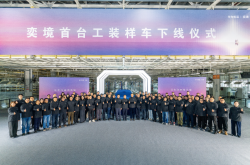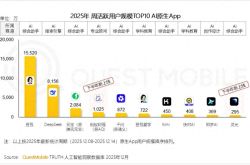Asian Auto Market | Vietnam June 2025: Market Transformation Accelerates, Local Brands Dominate
![]() 07/22 2025
07/22 2025
![]() 672
672
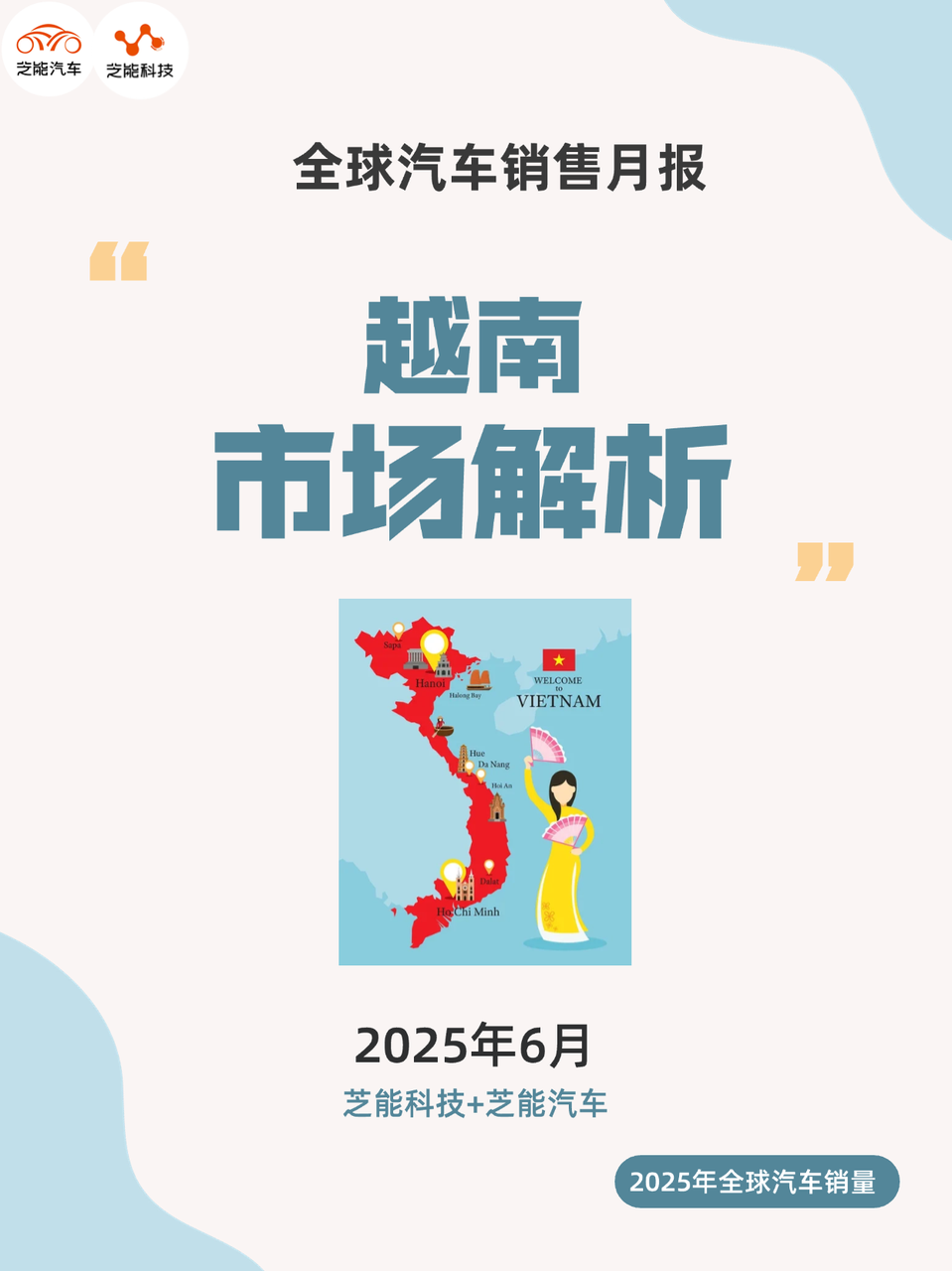
Vietnam's auto market surged 14.4% year-on-year in June 2025, reaching 36,000 units. With the inclusion of local automaker Vinfast's sales, the total market volume soared to 47,600 units, continuing its robust recovery trajectory.
Vinfast maintained its leadership with a 23.9% market share, dominating not only at the brand level but also seeing its VF 3 and VF 5 models topping the sales charts.
Joint venture brands like Toyota, Mitsubishi, and Changhe Kia exhibited steady growth, while Hyundai and Ford faced market share pressures.
Structurally, local new energy vehicles are now at the forefront, with a model mix shifting towards electrification, miniaturization, and urban commuting, reflecting Vietnam's accelerated market restructuring fueled by policies, demand, and industry dynamics.
01 Vinfast Consolidates Dominance, New Energy Penetration Path Gradually Clears
In the first half of 2025, Vietnam's total auto market exceeded 250,000 units, up 17.5% year-on-year, standing out among Southeast Asian nations. The primary driver behind this growth was the meteoric rise of local brand Vinfast.
In June alone, Vinfast sold 11,400 units, accounting for 23.9% of the market share, a remarkable leap from zero sales in the same period last year. For the first half of the year, Vinfast sold 67,600 units, representing 26.5% of the market, firmly securing the top spot on the brand list.
The heart of Vinfast's sales lies in its pure electric models.
◎ The VF 3 reclaimed the monthly sales crown in June with 3,667 units sold, accounting for 7.7% of the market share.
◎ Close behind, the VF 5 sold 3,060 units in June, accounting for 6.4% of the market share.
◎ Additionally, the newly launched Nerio Green and Herio Green swiftly ascended to the top of the monthly sales charts, demonstrating a swift market response.
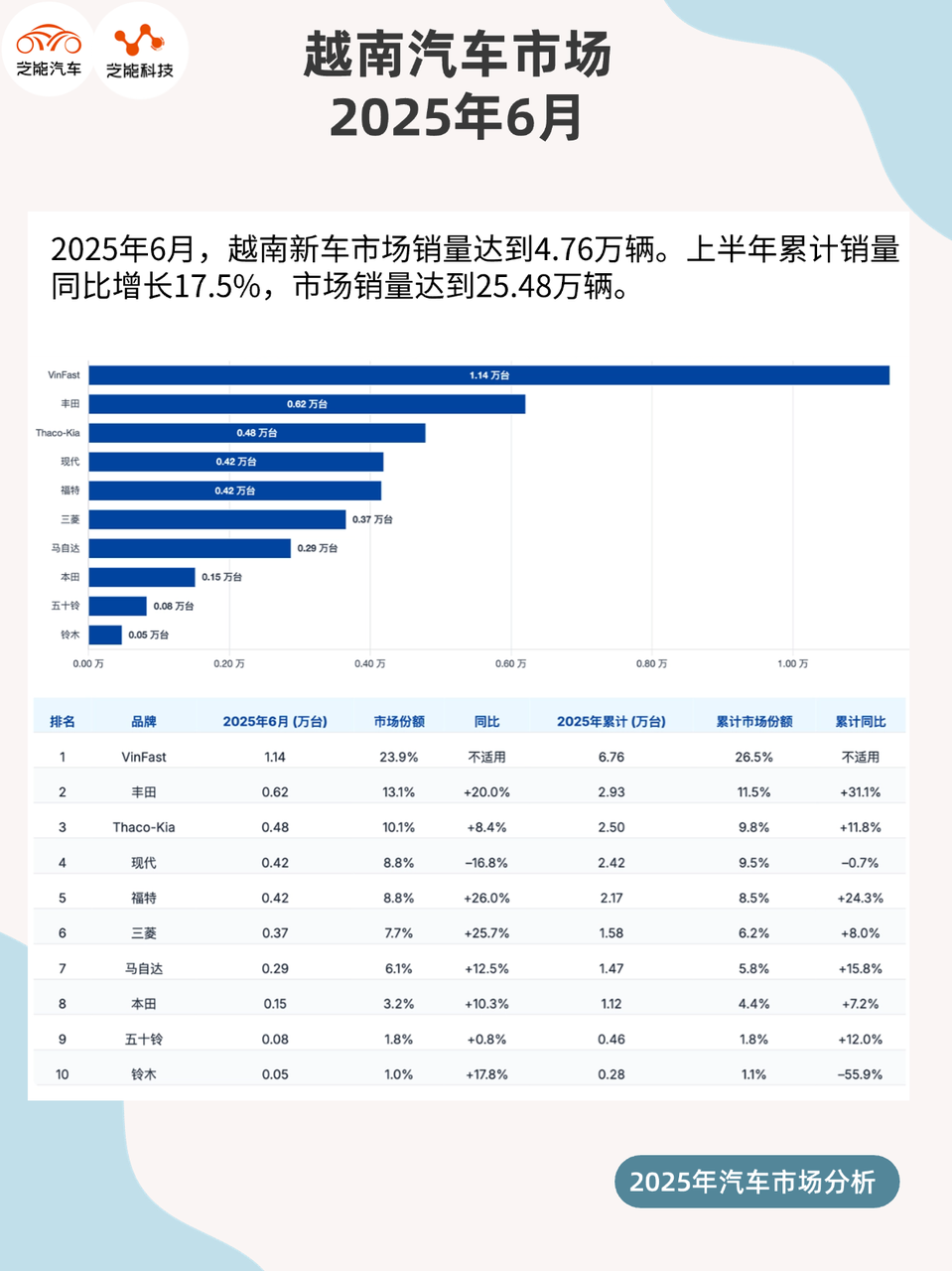
Strategically, Vinfast adopts a product lineup focused on miniaturized, urban-commuter-oriented electric vehicles, catering to Vietnam's congested cities, high fuel prices, and the economic priorities of lower- and middle-income groups.
This "bottom-up" electrification approach contrasts with the large-displacement, high-end electrification trend in European and American markets, resembling the Chinese brand strategy of popularizing electric vehicles in third- and fourth-tier cities. It steadily progresses from local demand, achieving scale through price control, policy subsidies, and marketing integration.
With the gradual introduction of models like the Nerio Green and Herio Green, Vinfast aims to transcend the limits of micro-electric vehicles and expand into crossover SUVs and higher-end consumer segments.
Notably, the VF 6 sold a cumulative 8,552 units in the first half of the year, ranking third on the sales chart. This model aligns closely with traditional family SUVs in design, configuration, and space, signifying the gradual expansion of Vinfast's product portfolio.
02 Joint Venture Brands Show Differentiation, Traditional Landscape Faces Impact from Local Brands
Traditional brands also exhibited clear market performance differentiation.
◎ Toyota ranked second in June with 6,213 units sold, a 20% year-on-year increase, primarily driven by models like the Yaris Cross, Vios, and Corolla Cross. These models focus on the compact segment priced between 100,000 and 200,000 VND, somewhat mitigating competition with Vinfast's low-priced electric vehicles.
◎ Mitsubishi also performed impressively, with June sales up 25.7% year-on-year, fueled by the Xpander and the newly launched Xforce.
As a crossover model emphasizing MPV and SUV traits, the Xpander continues to gain consumer favor with its high cost-effectiveness and versatile space suitable for various family scenarios. The Xforce, with its youthful design and enhanced urban adaptability, taps into the SUV segment, injecting new growth points into the brand.
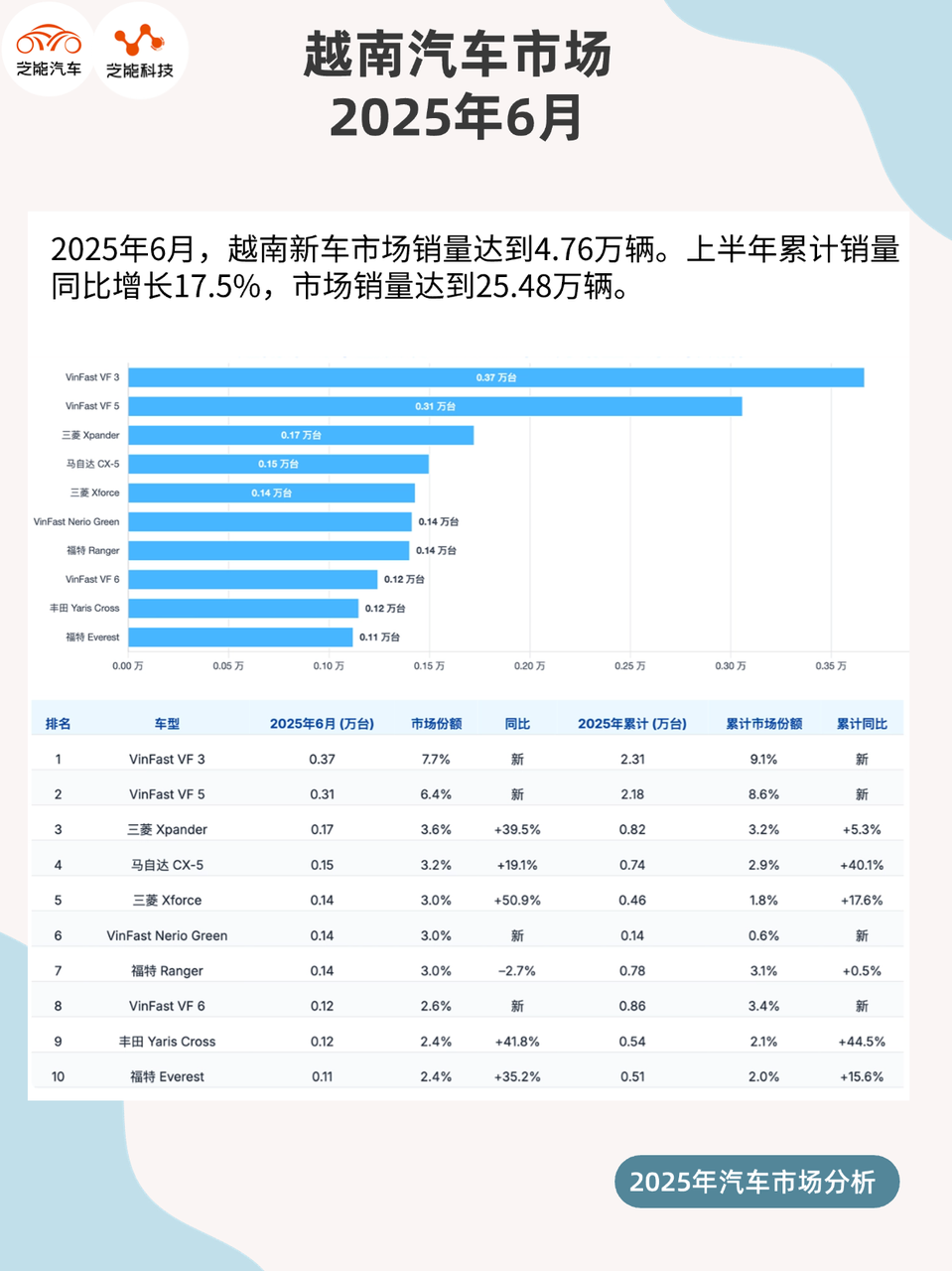
◎ Meanwhile, Hyundai and Ford experienced varying degrees of decline. Hyundai's sales fell 16.8% year-on-year in June, totaling 4,197 units, with models like the Accent and Santa Fe under double pressure from local brands and other Japanese and Korean competitors. Ford's performance was more complex; while overall sales increased slightly, core products like the Explorer saw significant declines, indicating waning acceptance of its mid-to-high-end models.
◎ Changhe Kia and smaller joint venture factories such as Isuzu and Suzuki also faced sales fluctuations.
These brands often have limited product diversity, inflexible pricing strategies, and weak resilience to market changes. As electrification and intelligence trends intensify, their market space may further shrink.
In emerging markets like Vietnam, the traditional gasoline vehicle market retains significant potential, yet the "leapfrog development" of electrification has become a pragmatic choice. With policy support and infrastructure gradually taking shape, local brands are gaining more initiative through supply chain control and pricing flexibility.
Summary
In mid-2025, Vietnam's auto market demonstrated high activity and rapid evolution. Local brand Vinfast swiftly secured market leadership through electrification and product diversification, reshaping the brand landscape and significantly impacting joint venture brands.





